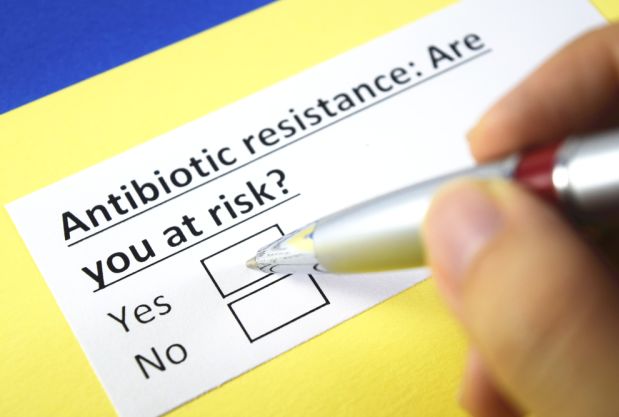Antibiotic Resistance: The New 'Superbugs' Paving the Way to the Pre-Penicillin Era?
M3 India Newsdesk Mar 29, 2017
Since the discovery of Penicillin in 1928 by Scottish scientist Alexander Fleming, antibiotics are considered an important part of treatment protocols. But now the new generation of super-resistant bacteria is ready to outwit all available remedies, and it seems the human civilisation is moving back to the pre-penicillin era.

Recently the World Health Organization (WHO) declared a list of superbugs and stated that it is the need of the hour to step up the fight against a dozen bacteria that are growing resistant to antibiotics and thus given the title “superbug”.
As early as 1945, Sir Alexander Fleming raised an alarm regarding antibiotic overuse when he warned that the “public would demand and then will begin an era of abuses”.
His prophecy is alarmingly accurate since in India itself, antibiotic-resistant neonatal infections claim the lives of 60,000 new-born babies each year, per the Review on Antimicrobial Resistance paper published in 2016. Not surprisingly, India, one of the world's biggest consumers of antibiotics, has issued new national guidelines to fight the rise of drug-resistant superbugs.
A Global Threat
The emergence of superbugs among the pathogens of public health importance is recognised globally as a threat to human health as they possess the ability to turn easily treatable infections into life-threatening ones, per a report published by the Indian Council of Medical Research Department of Health Research. Also, the averseness of the pharmaceutical industry towards developing new antibiotics, since these companies often target large profits is a matter of concern.
Dr Shiksha Doshi, Gynaecologist, believes that some doctors allocate antibiotics freely because it’s the easier option and like a ‘one-stop solution’. “Doctors should prescribe cautiously because it causes havoc on the immune system and causes dose-dependencies. Not surprisingly, patients these days’ pop antibiotics for simple ailments like cold and cough”, she added.
The Evolution of Resistance
Antibiotic resistance evolves naturally via natural selection through random mutation. It could also be engineered by applying an evolutionary stress on a population. Once such a gene is generated, bacteria can then transfer the genetic information in a horizontal fashion (between individuals) by plasmid exchange. If a bacterium carries several resistance genes, it is called multiresistant or, informally, a superbug.
How Much is Too Much?
Antimicrobial resistance is closely linked to the inappropriate antimicrobial use and is facilitated by irrational use of drugs, self-medication, and misuse of medicines. Antibiotic resistance can also be introduced artificially into a microorganism through transformation protocols. A study titled, The Relationship between Antimicrobial Use and Antimicrobial Resistance in Europe has demonstrated that patterns of antibiotic usage greatly affect the number of resistant organisms which develop.
Overuse of broad-spectrum antibiotics, such as second- and third-generation cephalosporins, greatly hastens the development of a resistance pattern called methicillin resistance.
Many other factors contribute towards resistance which includes incorrect diagnosis, unnecessary prescriptions, improper use of antibiotics by patients, and the use of antibiotics as livestock food additives for growth promotion.
Failure to act on drug-resistant infections will lead to 10 million extra deaths a year and cost the global economy $100 trillion by 2050, according to a February 2016 report on antimicrobial resistance commissioned by UK prime minister David Cameron.
The Road Ahead
India has the policy to tackle resistance to antibiotics since 2011, but many hospitals, nursing homes, and family doctors continue to overprescribe antibiotics, fueling drug-resistant infections, as per a report published by Thomson Reuters.
Recognising the need for having a public evidence on antimicrobial resistance (AMR), the Indian Council of Medical Research (ICMR) initiated putting together AMR surveillance network in 2013. Using the data from the ICMR’s AMR surveillance system of last two years, ICMR has developed evidence-based treatment guidelines for treatment of ten syndromes of infections. This document will be instrumental in guiding the treatment and will bring down inappropriate prescriptions and is, also expected to be of immense help to medical practitioners, hospital administrators, doctors and will be helpful in bringing down the burden of AMR in the country.
The Deputy Director of ICMR, Kamini Walia said in an interview with Thomson Reuters, “The idea of issuing these national guidelines on antibiotics is to bring about a change in the way antibiotics are prescribed".
She added, “Doctors' education on antibiotic use has so far been limited to what pharmaceutical representatives of drug companies told them. Some hospitals have prescription guidelines, but most don't”.
With the new guidelines in place, there’s hope that a lot of resistance development can be avoided. If the right measures are not taken, then human civilisation will indefinitely find its way back to the pre-penicillin era.
-
Exclusive Write-ups & Webinars by KOLs
-
Daily Quiz by specialty
-
Paid Market Research Surveys
-
Case discussions, News & Journals' summaries